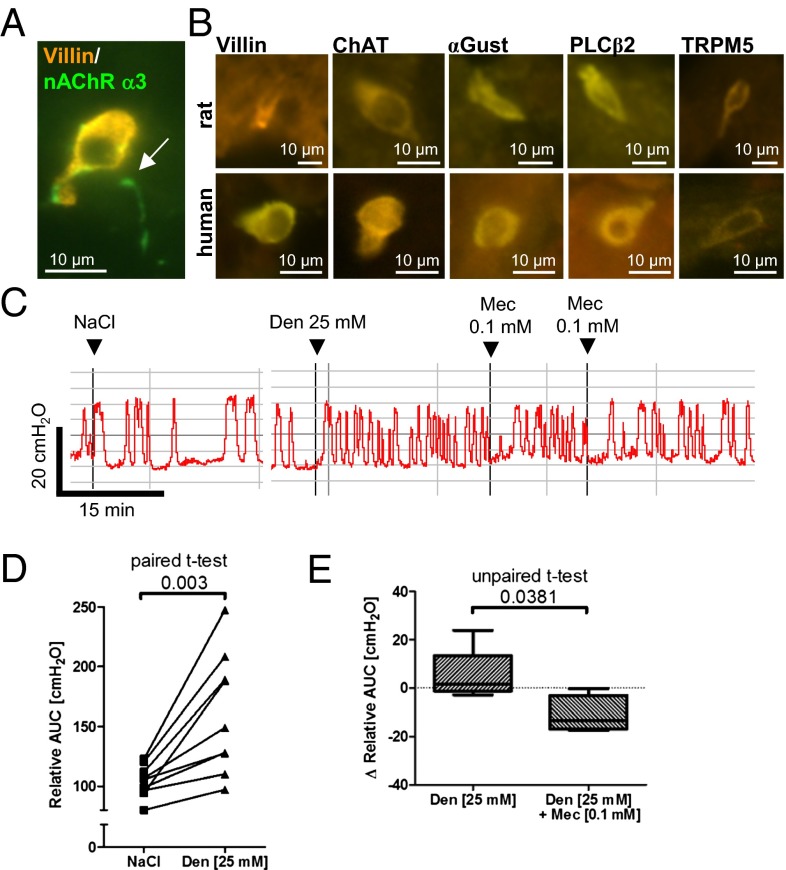Fig. 6.
Sensory nerve fibers approach urethral brush cells and elicit reflex bladder activation on application of a bitter substance. (A) A sensory nerve fiber expressing eGFP under the control of the nicotinic receptor α3-subunit (arrow) establishes contact with a villin-immunoreactive brush cell in the mouse urethra. (B) Immunolabeling. Solitary epithelial cells with immunoreactivity to brush cell markers, taste transduction cascade components, and ChAT in rat and human urethral epithelium. (C–E) Cystometric recordings from urethane-anesthesized rats. The bladder was continuously filled with saline (0.04 mL/min), causing a rise in intravesical pressure and initiating detrusor contraction and micturition. (C) Original recording of a single experiment showing that urethral instillation of denatonium increases detrusor activity compared with saline application, which is diminished by the nicotinic blocker mecamylamine (Mec). (D and E) Detrusor activity quantified as AUC. (D) Denatonium increases detrusor activity. AUC was determined over a period of 18–36 min in each condition, in nine experiments. (E) First, recordings were made after stimulation with a single dose of denatonium for a minimum of 18 min, with AUC/min as the baseline value. AUC/min decreased after application of mecamylamine, but increased over time when no additional compound was applied.

